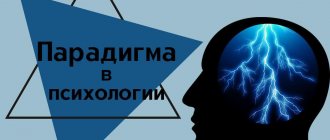Updated July 23, 2021 720 Author: Dmitry Petrov
Hello, dear readers of the KtoNaNovenkogo.ru blog. In everyday life, the term “exaltation” is often misinterpreted. It is confused with shockingness, pretentiousness, i.e. with behavior that is deliberately provocative.
But in reality, we need to talk about an established character trait of a person, which gives rise to certain behavioral reactions.
What is exaltation?
Exaltation is a special emotional state in which a person experiences unnatural inspiration and enthusiasm, often without having sufficiently compelling reasons for this. It can manifest itself in different forms. For example, a person suddenly begins to dream about something very emotionally, colorfully imagining his dream and experiencing such happiness as if it had already come true.
Exaltation is also called short-term conditions in which a person’s excitability sharply increases, his muscles are in good shape, and the nervous system reacts to the smallest stimuli. Usually this condition passes quickly and is replaced by inhibition of the nervous system and muscle weakness.
The term “exaltation” is derived from the Latin word exaltatio, (inspiration, elation, ascension, greatness). In addition to psychology, it is widely used in religions and various teachings. In some languages, this word is used to refer to the Christian holiday of the Exaltation. And in Mormonism, exaltation is the highest happiness that a person will receive in the Kingdom of Heaven.
People with mental disorders often fall into exaltation. For them, it arises for no reason and is expressed as strong pathological arousal, during which their mood rapidly changes, and with it, thoughts and behavior. Also in this state they experience increased motor activity.
Equipment
To record EEG, devices called Electroencephalographs are used. They consist of an electrode part, an amplifier system, and a recording device. Electrodes come in different types: cup and bridge. They are made from electrically conductive carbon or metal with a silver chloride coating. Such a coating is necessary so that a constant potential does not accumulate on the electrode, which causes polarization of the electrode. This results in interference. Non-metallic electrodes are least polarized.
To ensure accurate registration, parallel common-mode amplifiers with a notch filter are used. This allows you to combat network interference. In terms of their quality, amplifiers now allow recording without an electrically insulated chamber and without grounding.
Recording device. Initially, writing instruments with a paper tape feed were used as a recorder. They differed in ink devices and devices with a thermal pen. But consumables were quite expensive. Nowadays computer technology is used as a recording device. With the advent of computer technology, it became possible not only to record EEG on a non-paper medium, but also to carry out additional mathematical processing of EEG. This increased the resolution of the method.
The application of electrodes is also carried out in various ways. The international system adopted as the standard is the 10 - 20 system. Electrodes are applied as follows. Measure the distance along the sagittal line from Inion to Nasion and take it as 100%. At 10% of this distance from Inion and Nasion, the lower frontal and occipital electrodes are installed, respectively. The rest are placed at an equal distance of 20% of the distance inion - nasion. The second main line runs between the ear canals through the crown.
The lower temporal electrodes are located at 10% of this distance above the auditory canals, and the remaining electrodes of this line are located at a distance of 20% of the length of the biauricular line. The letter symbols indicate, respectively, areas of the brain and landmarks on the head: O - occipitalis, F - frontalis, A - auricularis, P - parietalis, C - centralis, T - temporalis. Odd numbers correspond to the electrodes of the left hemisphere, even numbers - to the right.
According to Young's system, frontal electrodes (Fd, Fs) are located in the upper part of the forehead at a distance of 3 - 4 cm from the midline, occipital electrodes (Od, Os) - 3 cm above the inion and 3 - 4 cm from the midline. The segments of the lines Od - Fd and Os - Fs are divided into three equal parts and central (Cd, Cs) and parietal (Pd, Ps) electrodes are installed at the division points. At the horizontal level of the upper edge of the auricle, the anterior temporal (Tad, Tas) are installed along the frontal line Cd - Cs, and the posterior temporal (Tpd, Tps) are installed along the frontal line Ps - Pd.
The advantage of the 10 - 20 system is a large number of electrodes (from 16 to 19 - 24), but this system requires more sensitive equipment, because the interelectrode distance is small and the potential is weak. Young's system provides sufficient distance and all electrodes are evenly distributed over the surface of the head, but the degree of localization during abduction is insufficient.
The method of removing potential can also be different. The generally accepted system is monopolar recording. In this case, the electrodes on the head are active and record changes in potential relative to an indifferent electrode (most often located on the earlobes). Bipolar recording detects the change in potential between two electrodes located at different points on the surface of the scalp.
All the indicated methods and techniques have their advantages and disadvantages. Therefore, in international practice, mandatory recording according to the 10-20 system is established, both in monopolar and bipolar modes. During computer recording, registration using the 10-20 system is allowed with further digital conversion of the EEG according to the selected bipolar scheme.
Exalted personality type
The German psychiatrist Karl Leonhard is known for compiling one of the first character typologies and introducing the concept of personality accentuations into psychology. His classification includes an affectively exalted or simply exalted type of accentuation. Personalities belonging to this type easily fall into a state of exaltation for any reason.
People with an exalted type of personality accentuation perceive pleasant news with delight and react emotionally to the smallest troubles. The word “exaltation” is often used to describe their character. Thus, exaltation is a characteristic feature of people who easily fall into a state of exaltation , react too enthusiastically to good news and become overly upset by unpleasant news.
Parameters of normal beta rhythm
Frequency 12-25 Hz (some recognize 13-25 Hz) Beta1 rhythm 25Hz Beta2 rhythm -40Hz
The amplitude is small - 10-15 µV.
Zoning - normally distributed in the anterior-central and temporal regions. According to Zhirmunskaya E.A. The beta 1 rhythm is not purely physiological and is not typical for the norm. Temporal beta rhythm is often the result of muscle artifact.
C-rhythm is a variant of the normal rhythm with a frequency of 8 - 13 Hz and is detected in the central sections. It has the following features: it disappears with the contralateral active clenching of the hand into a fist, it is narrowly localized in the central sections. Slow rhythms that occur normally. Theta rhythm - frequency 4-8 Hz, amplitude up to 30-40 µV. Delta rhythm - frequency 0.5-4 Hz, amplitude up to 30-40 µV.
Signs of exaltation
To understand that your friend (or you) has an exalted type of personality accentuation, you need to pay attention to the degree of emotionality of the person. Typically, such people do not hold back their feelings, reacting to everything quite sincerely and without trying to hide their emotions. They also have good taste, they pay attention to their appearance, try to dress fashionably and look stylish.
Exalted individuals are often interested in religion and are carried away by various teachings. As a rule, they achieve some success in creative activities, since their emotionality helps them develop good artistic taste. Thanks to their sensuality, they are able to understand in advance what emotions their creation will evoke in the viewer or reader.
Also, such people have well-developed empathy. They subtly sense other people's emotions, literally feel someone else's pain on a physical level, and because of the troubles of a loved one, they worry more than they do themselves. Excited individuals easily make self-sacrifice and willingly help those who describe their problem emotionally enough (and their friends often take advantage of this).
The main manifestations of exaltation:
- Sociability. Such individuals love to communicate. They quickly find a common language with strangers and always know what to talk about with loved ones.
- Smiling. When communicating, they almost always smile, usually making a pleasant impression on their interlocutors.
- Amorousness. They quickly become attached to people and fall in love easily, but these feelings are usually flighty and pass just as quickly.
- Touchiness. They are offended by every little thing (for example, a lack of attention from a loved one).
- Alarmism. Any minor trouble causes them great upset, and doubts can plunge them into panic.
In addition, individuals with an exalted type of accentuation often get into arguments and argue quite heatedly, but try to maintain the most friendly tone towards their opponent. In dangerous situations, they are unable to hide their fear; they immediately develop a noticeable trembling in their voice and other manifestations of panic.
Causes of exaltation
In defining what exaltation is, we found that this condition usually has no cause. It occurs very quickly in children - this is the norm for them. They usually express all their emotions very emotionally, accompanied by intense gestures. Children are characterized by exaltation; they can feel delighted or throw tantrums over little things.
In adults, exaltation can persist or develop for reasons such as:
- Genetic predisposition. Accented personality traits are often passed on to children from their parents.
- Wrong upbringing. This character trait can be formed in childhood due to overprotection or lack of parental attention.
- Incorrect self-esteem. The reason may be either low or high self-esteem.
- Inability to satisfy basic needs. If a person experiences communication problems or cannot build relationships, he also begins to perceive everything overly emotionally.
- Incorrect understanding of morality and ethics. Excited behavior may be the result of a misunderstanding of how to behave in society.
- Conflicts with peers at school. Childhood trauma resulting from conflicts and bullying (what is it?) can also lead to increased emotionality in adulthood.
- Past illnesses. Some illnesses can cause a person to react too sensitively to any changes in well-being.
- Professional deformation. Representatives of different professions are prone to specific manifestations of emotions and in certain situations can fall into exaltation.
Pros of exaltation
When explaining what exaltation is, they first of all talk about positive emotions. And for good reason. Exalted individuals are friendly and positive, thanks to which they easily find a common language with other people. Their lives are brighter because they experience a lot of pleasant emotions from new experiences. They enjoy visiting museums, viewing monuments and architectural sights. Any vacation turns into a real adventure for them.
In addition, such people are kind and always ready to help, thanks to which they quickly form friendships. In their personal and family life, they are usually more successful because they feel their partner well and love to please their loved ones. They often have talents that help them to be popular and also achieve success in certain professions related to performances or social activities.
Disadvantages of exaltation
The inability to control your own emotions can have a negative impact on your relationships with other people. Exalted individuals are often treated lightly or warily. They find it difficult in situations in which other people feel quite natural and at ease.
Often, individuals with an exalted type of accentuation have problems moving up the career ladder, because their managers simply do not take them seriously and are not ready to entrust them with serious responsibilities. Despite their openness and good nature, such people often unwittingly push away those whom they immediately liked and aroused pleasant emotions.
An exalted person himself usually does not understand that he pushes people away with his temperament. This aggravates his situation, because not understanding the problem, he does not try to solve it, but attributes everything to the injustice of fate. As a consequence of this, another serious problem for such people is bad habits that help them suppress unnecessary experiences.
Additional EEG Analysis Methods
Currently, visual analysis remains the main method of EEG analysis. Additional analysis methods include calculating the power spectrum using the fast Fourier transform. The power spectrum shows the severity of the rhythm of a given frequency. The power spectrum is visually presented in the form of averaged curves, distribution of power spectra by epoch, and spectral mapping.
Another additional method is coherence calculation. Coherence shows the degree of similarity of oscillatory processes at two different points, regardless of their amplitude representation. It has been established that the average coherence value is constant and reflects the degree of stability of connections in the system.
Recently, another processing method has been used. This is the localization of sources of pathological activity using the Multi-step Dipole Localization method. Through numerous calculations, a mathematical model of the probable location of the source of a given wave is created. This model is compared with the amplitude distribution of the same waves on the scalp. For localization, only those EEG slices are used that have a given probability of convergence between the computational model and the scalp recording. A probability of 0.95 or more is considered reliable.











